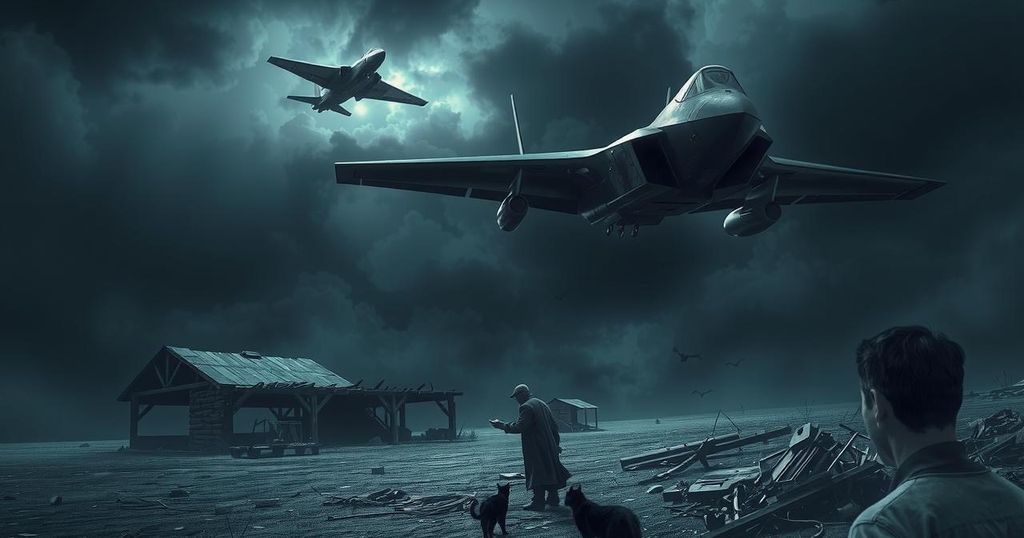Navigating the Future: Defense Tech Innovation and Startups’ Crucial Role
The U.S. Department of Defense (DOD) is significantly increasing its focus on defense tech innovation as reflected in a proposed $850 billion budget for 2025. The DOD’s initiatives aim to facilitate cooperation with startups amidst challenges in securing government contracts. Programs like SBIR and STTR support startups in overcoming funding barriers, while new strategies like DIU 3.0 are set to enhance commercial technology adoption, anticipating a flourishing relationship between the DOD and the defense tech sector.
In an age punctuated by rising geopolitical tensions and unprecedented technological strides, the United States is ardently pursuing innovations in defense to safeguard its global stature and national safety. With a staggering proposed defense budget of $850 billion for 2025—bolstered significantly for research and development—the Department of Defense (DOD) is tapping into state-of-the-art technologies and engaging in collaborative public-private alliances. This exploration of how the U.S. is repurposing innovative energies to confront emerging national security dilemmas reveals a vivid tableau of our defense strategy.
The DOD’s 2023 release of the National Defense Science and Technology Strategy (NDSTS) reflects its commitment to harness pioneering technologies to preserve competitive advantages crucial for future national defense. This follows last year’s technology vision laid out by Heidi Shyu, Undersecretary of Defense for Research and Engineering, which spotlighted 14 critical areas of technology, including quantum science, artificial intelligence, and space ventures, all essential for national defense.
From established defense giants to nimble startups, the DOD collaborates with diverse partners to fulfill its technological needs. Yet, for many startups contending with limited resources and unfamiliarity with DOD processes, navigating the intricacies of government contracting is often overwhelming. Consequently, many startups falter at the “Valley of Death”—the treacherous phase between initial government funding and viable commercialization. In response, the DOD is redefining its relationship with these fledglings, utilizing the surge of private capital to potentially enhance their success rates.
To tackle these funding hurdles, the DOD has integrated its Small Business Innovation Research (SBIR) and Small Business Technology Transfer (STTR) programs through DARPA, providing crucial funding for research and prototype development aimed at meeting defense needs. However, during the past decade, a mere 16% of companies funded by the DOD’s SBIR program managed to secure Phase III contracts, the final stage critical for commercialization.
Moreover, startups reaching Phase III face substantial obstacles in fulfilling DOD requirements necessary for achieving Program of Record (POR) status— a milestone that guarantees funding from Congress recorded in the Future Years Defense Program. This significant hurdle has seen less than 1% of Phase I awardees attain POR status, highlighting an enduring challenge in defense tech commercialization.
In the last ten years, the DOD has birthed multiple innovation-driven organizations to spur the advancement of cutting-edge technologies, aligning its operations with the agile environment that startups thrive in. Initiatives like the Defense Innovation Unit (DIU) aim squarely to bridge the gap between commercial tech and military needs, epitomizing the Department’s commitment to fostering an ecosystem nurturing groundbreaking innovation. The DIU strategy continues to evolve, with DIU 3.0 launching in 2024, now backed by a budget escalating to $983 million, from just $70 million in 2023.
Rhett Jeppson, Executive Director of JPMorganChase, remarked, “Since the inception of Military and Veterans Affairs in 2011, we have worked to deepen and diversify our support for the military community and their families… Veterans naturally gravitate toward businesses that support the national security space, many of which are dual use and represent significant commercial opportunities.”
As the stormy geopolitical climate seems set to persist, the DOD’s focus on technology reinforces its missions across various initiatives, notably through increasing budget allocations aimed at supporting startups. This trend, alongside a noticeable rise in venture investments in defense tech—approaching $25 billion slated for 2024 following an astounding $70 billion in 2022 and 2023— is transforming the landscape for defense-oriented innovations. The acknowledgment by the DOD of the essential role startups have in this mission, combined with stepped-up efforts to guide them through their funding journey, promises a robust future for defense tech ventures.
This discussion revolves around the U.S. Department of Defense’s ongoing efforts to enhance its capabilities in defense technology through innovation and collaboration with startups. It underscores the challenges these startups face in securing government contracts and funding, specifically the difficulties encountered in transitioning from initial support to commercial viability. Additionally, it highlights strategic initiatives, such as the NDSTS and DIU, aimed at strengthening the relationship between the DOD and private innovators, showcasing a participatory approach to addressing current and future national security challenges.
In summary, the U.S. Department of Defense is strategically engaging with startups to bolster its defense technology capabilities amid growing global tensions. By redefining collaboration methods and increasing budget allocations, the DOD is alleviating some of the struggles faced by startups, particularly in crossing the challenging Valley of Death. This partnership not only enhances innovation but also promises a fortified national security landscape as defense tech continues to thrive, backed by robust venture investment activities.
Original Source: www.jpmorgan.com




Post Comment